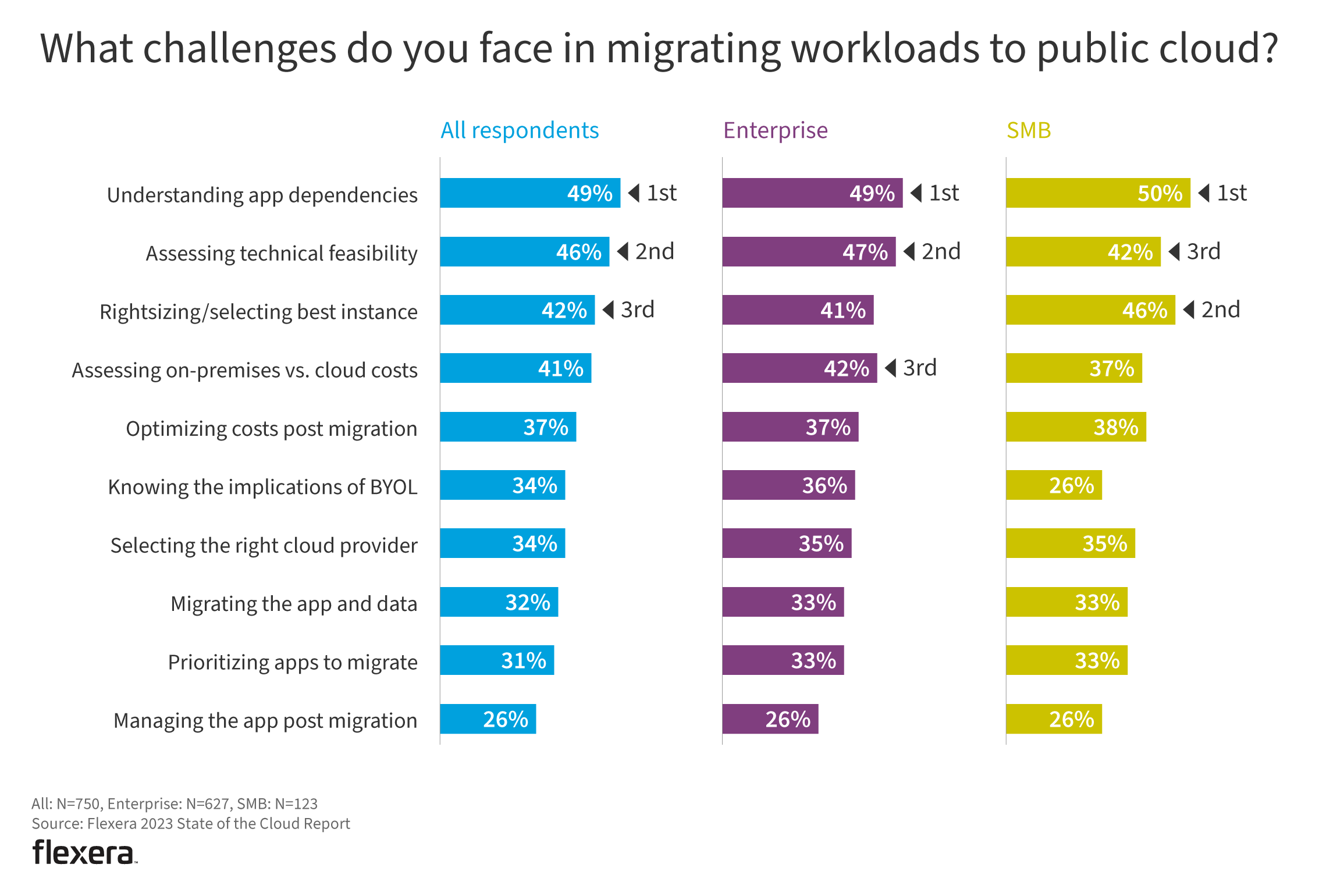Cloud migration
What is cloud migration?
Cloud migration refers to the process of moving digital assets such as data, applications and workloads from on-premises infrastructure or existing cloud environments to a different cloud service provider or cloud platform. This transition is typically done to leverage the benefits of cloud computing, which include scalability, flexibility, cost savings and easier management.
Cloud migration can involve various levels of complexity, depending on the scope of the migration, the nature of the assets being migrated and the specific goals of the organization. Cloud migration involves several steps, including planning, assessment, selecting the right migration strategy, testing, actual migration and post-migration optimization. Each step requires careful consideration of factors such as security, data integrity, compliance, performance and user experience.
Different types of cloud migration strategies include:
- Rehosting (lift and shift): This involves transferring applications and data from an on-premises environment to the cloud with minimal changes. The goal is to quickly move resources to the cloud without significant modifications. While this can provide some time savings benefits, it will not fully leverage cloud-native capabilities
- Replatforming (lift, tinker and shift): In this approach, some modifications are made to the applications or workloads to make them compatible with the target cloud platform. This might involve updating software versions, optimizing configurations and taking advantage of certain cloud services
- Refactoring (re-architecting): This strategy involves making substantial changes to the application architecture to take full advantage of cloud-native services. It might involve redesigning parts of the application, breaking monolithic architectures into microservices and utilizing platform-as-a-service (PaaS) offerings
- Rearchitecting (rebuilding): This is a more comprehensive approach where the application is rebuilt from scratch using cloud-native technologies and best practices. This approach can provide maximum benefits in terms of performance, scalability and cost-efficiency, but it requires a significant investment in time and resources
- Replacing (dropping and shopping): Sometimes it might make sense to replace existing applications with off-the-shelf cloud-based solutions that provide similar functionality. This approach is typically chosen when legacy systems are outdated or no longer aligned with the organization's goals
- Retiring: This involves identifying and decommissioning assets that are no longer needed. During cloud migration, organizations have an opportunity to evaluate their systems and remove redundant or obsolete components
Cloud migration planning is incredibly important for organizations of any size, and you should thoroughly analyze your existing systems, understand the potential benefits and challenges of migration, and choose the appropriate strategy that aligns with your business goals and technical requirements.
Common challenges associated with cloud migration
The process of cloud migration can present several obstacles, including data security, application compatibility, vendor lock-in and skill gaps. You have to manage potential downtime, adapt to process changes and ensure data integrity. Successful migration requires extensive and careful planning, choosing the correct migration strategy and ongoing monitoring to optimize performance and avoid these challenges in order to prepare for day-two operations and optimization.

Why should organizations consider migrating to the cloud?
Migrating to the cloud offers numerous benefits that can significantly impact your operations, efficiency and competitiveness. The scalability and flexibility of cloud, if done correctly with correct cloud migration planning, can result in large cost savings opportunities, rapid deployment and much quicker product innovation.
Benefits of cloud migration include:
- Scalability
- Cost savings
- Global accessibility
- Rapid deployment
- Innovation and agility
- Collaboration efficiency
- Environment sustainability
- Reduced IT management complexity
